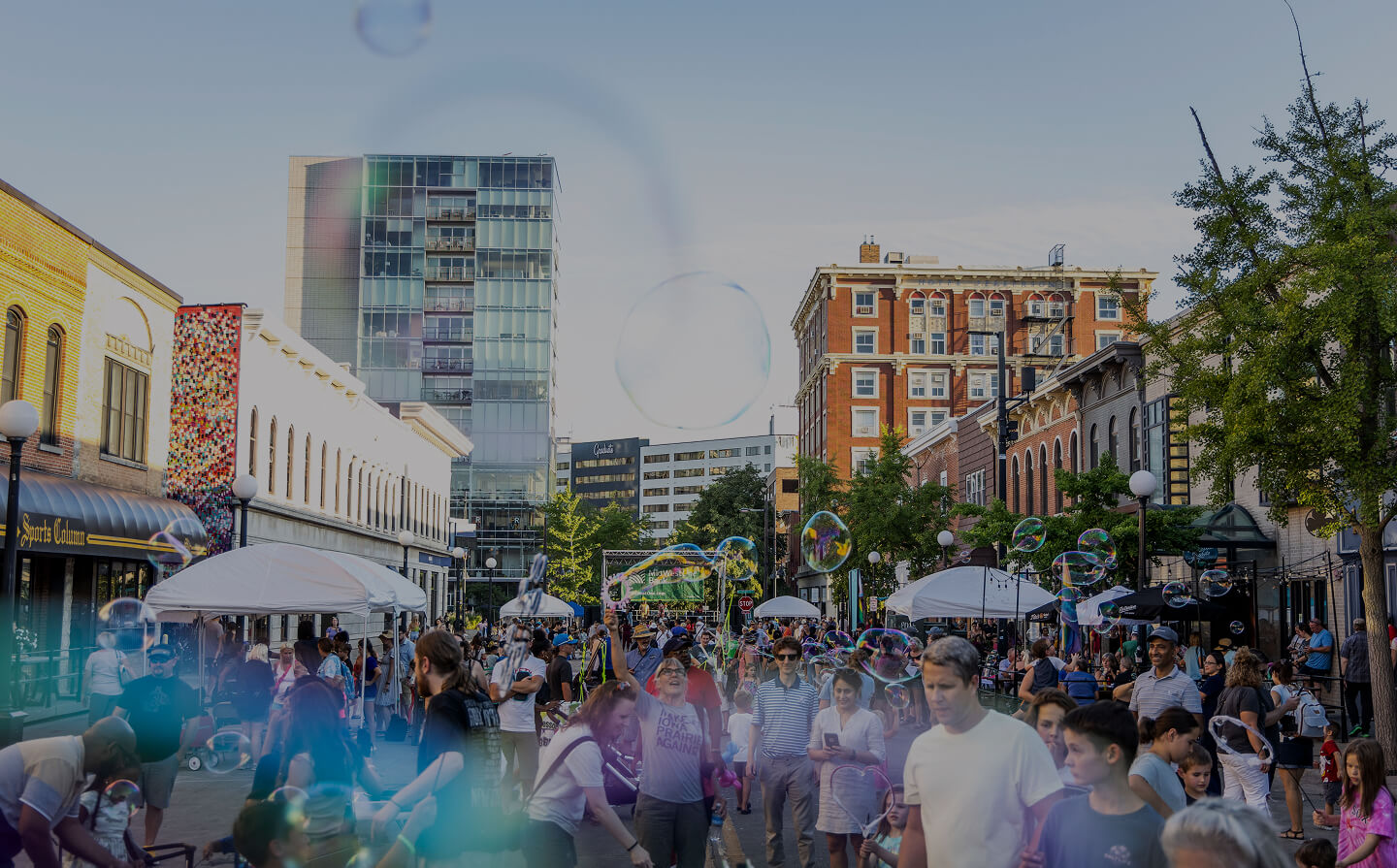Iowa City has a rich and vibrant history. Some remember the city served as the second capital of the Iowa Territory and the first capital city of the state of Iowa before that designation moved to Des Moines in 1857. But not everyone is aware of the impact those early years had on how Iowa City’s neighborhoods and districts developed and how those roots continue to add layers of interest and intrigue to the city.
There are reams of information about Iowa City’s early days. But here’s just a taste of where it all started.
How It Began
The city itself was created by a legislative act in January 1839, a decision made in lockstep with Governor Robert Lucas’ desire to move the capital out of Burlington and closer to the center of the territory.
On May 1, 1839, Commissioners Chauncey Swan and John Ronalds met in a small settlement south of Iowa City to determine where the new capitol city would be located. They selected a site on the bluffs above the Iowa River. By June, what’s known today as the downtown district—from Brown Street in the north to Burlington Street in the south and from the Iowa River eastward to Governor Street—was platted and surveyed.
From 1841 to 1857, in this newly forming community, the Iowa constitution was drafted in the Old Capitol building, the first governor of the state of Iowa was inaugurated, and legislators authorized the formation of the state’s first public university, the State University of Iowa, which is known today as The University of Iowa.
It was during this time that many of Iowa City’s neighborhoods began to sprout, grow, and become foundational pieces of the city’s growth over the next 180 years.
Iowa City has eight historic districts on the National Register of Historic Places: Brown Street, College Green, East College Street, Jefferson Street, Longfellow, Northside, Summit Street, and Woodlawn districts. The Melrose district is on the National Register, but is not designated as local historic preservation zoning district. The City also has five conservation districts, including Clark Street, College Hill, Dearborn Street, Goosetown/Horace Mann, and Governor-Lucas Street. Those who live in or visit Iowa City often hear about these neighborhoods or see them celebrated on historic signs along cobblestoned streets.
Many homes once played an important role in our city’s history, including those that surround Iowa City’s downtown district. Here are a few of the homes currently on the market and awaiting new owners to forge their own histories.
1129 Church Street – Goosetown
From the outside, this charming Goosetown home is unassuming. But its shaded front porch draws visitors inside to explore the tasteful modern updates.
Built in 1900, the well-maintained home is part of a historic neighborhood that got its name from the geese that roamed the area. The first inhabitants were working class Bohemian and Czech immigrants who arrived in the 1850s and kept geese in their yards. Through the years, Goosetown residents were employed as brewers, tradesmen, laundresses, domestics, and clerks. And when the University of Iowa began to grow after 1900, many Goosetown residents found stable jobs there.
Today, Goosetown remains a close-knit neighborhood, where gems like this home are hard to find. It has a newer two-car garage with an attached bonus space in the back, an almost fully fenced-in backyard with a deck, and a large main floor bedroom with its own master bath.
1100 N Dubuque Street – Park Bluffs
This home on a secluded hilltop, in an area once widely known as Park Bluffs, has a deep and intricate history. Former physicians, professional athletes, and University faculty have all made their mark and their memories inside its walls. The home, which offers a unique blend of history and modern additions, has been shaped by two Chicago architectural powerhouses. It was built by Chicago architect Mark Anthony in the 1930s and then updated with modern additions under the guidance of Chicago architecture firm Pappageorge Haymes Partners.
Across from the Iowa River, at the base of the hill where this home sits, an Iowa pioneer built a three-story gristmill in 1843, and the area later played a role in the Underground Railroad. As you ascend the hill, you’ll pass a handful of homes where other Iowa trailblazers have lived: a Vietnam war surgeon, one of the most influential directors of The Writer’s Workshop, and prominent faculty who have helped forge new frontiers at the University of Iowa.
The 6,000+ square foot home sits on 1.2 acres and is surrounded by beautiful trees and landscaping that bring this hidden gem to life. It has plenty of space for entertaining, with a chef’s kitchen, dramatic great room, covered patio and grill, and expansive lawn.
1036 Woodlawn Avenue – Woodlawn Park
The most prominent house in the Woodlawn Historic District, this Queen Anne style home consists of 3,000 square feet of living area on a rolling lot. Woodlawn officially joined the National Register for Historic Places in 1979, largely in part to the key role it was expected to play in Iowa City’s elaborate capital city plan.
The area was originally intended to house the governor’s mansion to compliment the capitol building in 1839. However when the capitol was relocated to Des Moines in 1857, plans for the governor’s mansion were never set in motion, and the Woodlawn area was platted for residential lots.
Today when you visit Woodlawn, it’s like stepping back in time to the nineteenth century. Large Italianate and Queen Anne style homes sit on wooded lots accessible from the unpaved oval street. The Queen Anne style home was built in 1893 and includes a three-level carriage house and beautifully landscaped 1+ acre yard. Its sizable rooms and abundance of natural light, combined with its fascinating history, create many exciting opportunities for the home’s future owner.
Interested in learning more about these homes and other historic homes as they hit the market? Reach out to one of our agents, and we can help you find the homes that match your search criteria.








